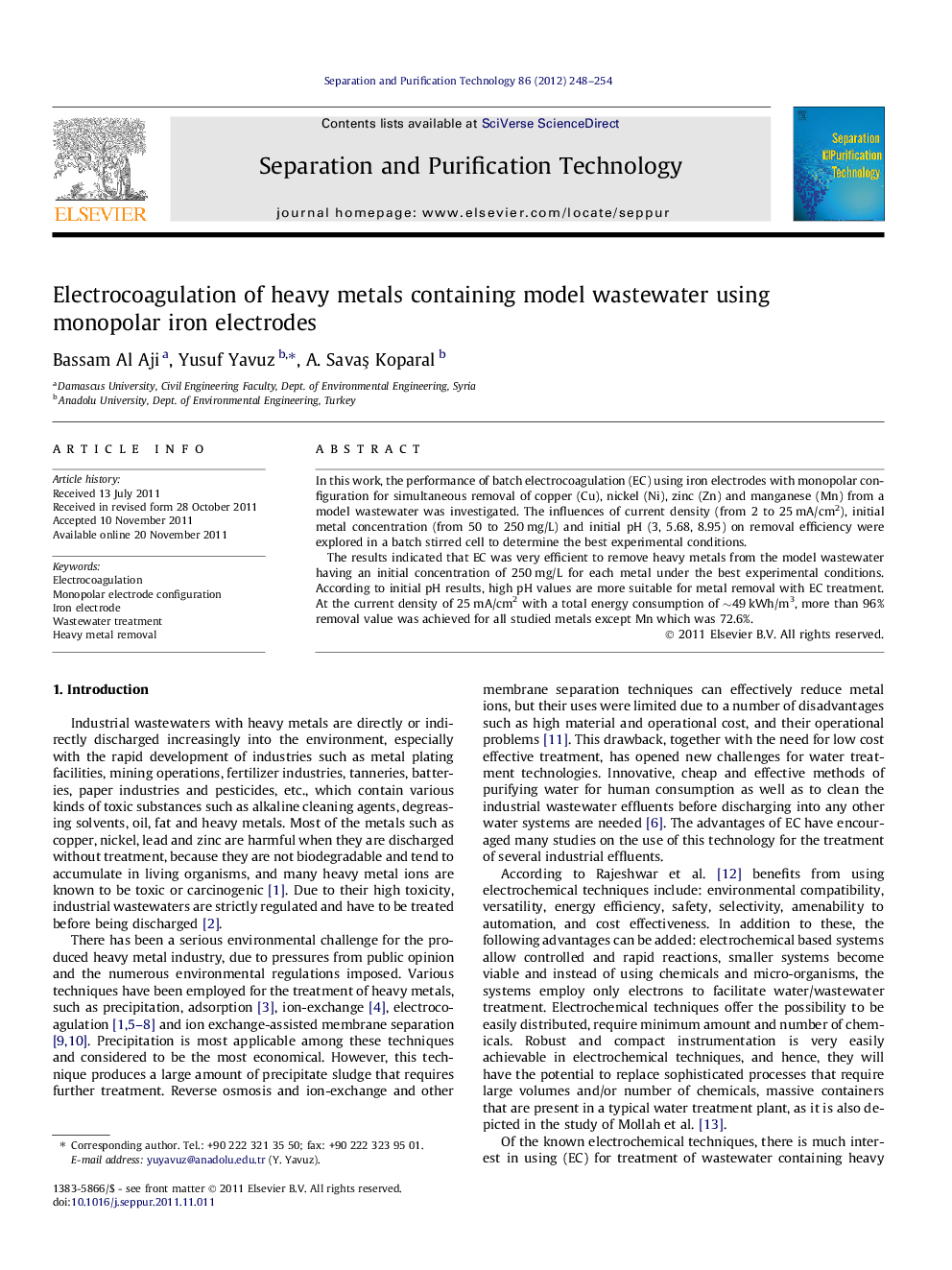| Article ID | Journal | Published Year | Pages | File Type |
|---|---|---|---|---|
| 642347 | Separation and Purification Technology | 2012 | 7 Pages |
In this work, the performance of batch electrocoagulation (EC) using iron electrodes with monopolar configuration for simultaneous removal of copper (Cu), nickel (Ni), zinc (Zn) and manganese (Mn) from a model wastewater was investigated. The influences of current density (from 2 to 25 mA/cm2), initial metal concentration (from 50 to 250 mg/L) and initial pH (3, 5.68, 8.95) on removal efficiency were explored in a batch stirred cell to determine the best experimental conditions.The results indicated that EC was very efficient to remove heavy metals from the model wastewater having an initial concentration of 250 mg/L for each metal under the best experimental conditions. According to initial pH results, high pH values are more suitable for metal removal with EC treatment. At the current density of 25 mA/cm2 with a total energy consumption of ∼49 kWh/m3, more than 96% removal value was achieved for all studied metals except Mn which was 72.6%.
► We examine electrocoagulation of a mixed heavy metal solution using iron electrodes. ► Effects of experimental parameters are testing to obtain best study parameters. ► Results are very encouraging for simultaneously heavy metal removal. ► Electrocoagulation is effective even at high initial concentration. ► Electrocoagulation is more effective at high pH values.
